artistic classes
Circus Arts
Circus arts classes are the cornerstone of the course and are scheduled regularly throughout the year. Each of the three years of study includes 8 hours of supervised classes per week, for a minimum of 250 hours per year. Specific circus disciplines are taught by teachers who are experts in their fields. Associate professors add their complementary perspective to the resident professors’ classes.
Teaching is highly individualised to encourage the unique character of each student and technical learning incorporates research as the course develops.
The specific composition of each cohort influences the way the studio in which training takes place is organised. Courses are delivered in the same setting.

Personal projects
Each student embarks on a personal project to demonstrate their creativity, supervised and supported by a team of professors over the course of the three years. This personal project, focusing on the individual’s circus act, gradually unfolds over 40, 50 and 100 hours, leading to presentations at the end of each research period. In the last year, this creative work culminates in a performance in “EXIT”, the showcase for final-year work at the Halles de Schaerbeek.
Each student is encouraged to develop his or her own creative method. Depending on their personal project and their approach as an author and/or performer, students can choose their accompanist from the teaching staff and so form their own team around their project, including an accompanist, a circus arts professor and creative partners (set designer, sound designer etc.). This means that they learn how to manage the whole artistic creative process.
This course is designed to develop students’ critical thinking when it comes to art in general as well as their own artistic work.
Public creative workshops
Three very different experiences over three years
In the first year, the public workshop offers students the chance to research a particular piece of apparatus, putting all of them on an equal footing in terms of their capacity for invention, without giving any advantage to a particular technique. The choice of apparatus could also be defined as a non-apparatus, as it does not belong to anybody in particular and so does not allow any specific technical development. But these workshops offer a free space in which any strict purpose is set aside to give space to pure invention. Students are encouraged to open their minds to different acrobatic possibilities as well as to those around them.
In the second year, the public workshop targets one of the two goals of ÉSAC’s educational programme.
- The first is to perform as part of a creative collective and contribute to the production of a collective circus show for the benefit of a dramatic piece, following the instructions of a director.
- The second is to take charge of their research and put forward relevant, coherent suggestions that fit in with the work in question.
The workshop is led by a director who is a member of the college’s teaching staff. The team is mainly made up of people from within the college and puts on four public performances at the Jacques Brel Auditorium – Campus du Céria.
In the third year, the process is similar to that of the second year, but the production is led by a team of professional artists from outside the school. Twice as much time is spent on the creative process and the resources used are doubled. At the end of this process there are five public performances that take place at ÉSAC.
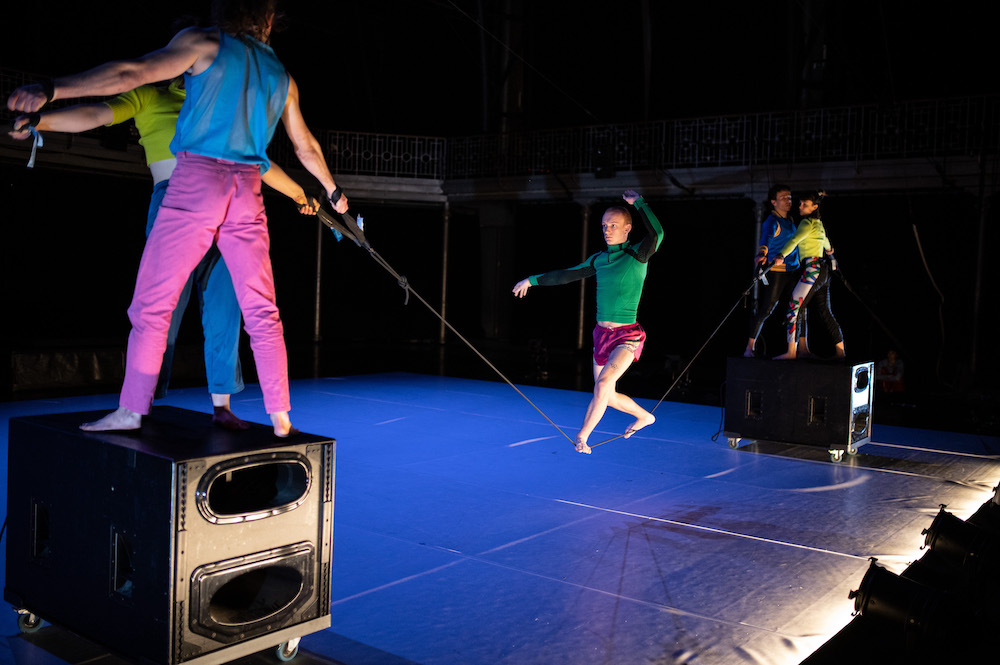
Dramaturgy and stage techniques
Classes designed to support the personal project
Dramaturgy
The purpose of these classes is to help students think about the artistic creativity specific to the circus arts, and more specifically, teach them how to “write” circus acts. Each year, the course focuses on three areas in order:
- Explore – What is dramaturgy?
- Design – What can you do with dramaturgy?
- Choose – What is artistic creativity?
Sound design
Sound is a fundamental complement to circus arts. Whether providing music, ambiance, or rhythm, the acoustic element is all too often seen as an added extra at the last stage of the creative process. In fact, sound can be a trigger or a catalyst, or provide support for a particular artistic approach, just like any other aspect of dramaturgy. Learning how to decode, to really listen. Learning how to separate your own personal tastes from the needs of a creative project, opening up your mind and triggering your curiosity for less obvious or less accessible sound worlds.
In order to be as autonomous as possible when carrying out simple processes, students will learn how to process sounds using a range of software, as well as getting to grips with stage equipment, focusing on both sound controls and by addressing all the technical aspects of sound and lighting.
Stage techniques
Every year, a practical internship is organised for second-year students during the Circa Festival in Auch.
Performance
These classes include movement, performance in general and music. They provide support for the personal projects and public creative workshops. Thanks to a whole range of different approaches, performers build up their own toolkit of different techniques to find their own path through an array of performance situations.
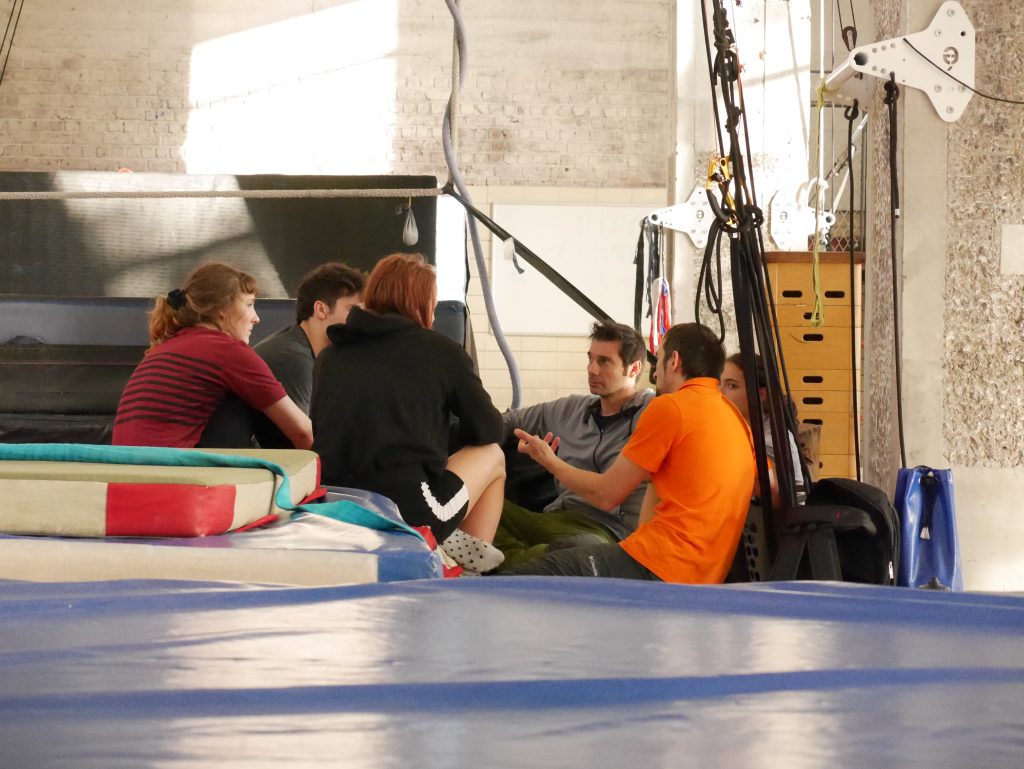
Movement
The classical dance course has been adapted to the contemporary circus scene. Students learn how to move easily, fluidly and with precision. It helps them become more aware of their bodies and their lines, as well as learning how to control and coordinate their upper and lower bodies. As there is a particular vocabulary at the core of classical dance, the course helps students work on their muscle memory by perfecting a series of movements which are then set to music. This class is preceded or followed by a yoga session.
The improvisation course familiarises students with research work involving other people, using the body as it moves and working on specific instructions about space and time. Improvisation is encouraged to help students develop autonomy, artistic intelligence and creativity in their movement.
The contemporary dance class develops the student’s ability to move fluidly, dynamically and with precision, while respecting how the body naturally works. To begin with, this course focuses on identifying students’ technical abilities in relation to how their bodies move. Students explore the weight of their body and how it moves in relation to the floor and the space around it. Deconstructing movements into their different phases help them understand the journey that a movement takes through their body and hone the precision of that movement.
General performance
This course is divided into bodies in shapes, facets of the body and body games, and is designed to create a space in which students can explore and be creative, both individually and together. The goal is to acquire creative autonomy, versatility and the ability to adapt to different contexts and artistic requirements.
It’s about encouraging students to be open, to question everything that they take for granted, and awakening their awareness of their senses, of the volume of their own voice, their perceptions, their capacity and their potential, their relationships with spaces and with other people, all the while searching for meaning.
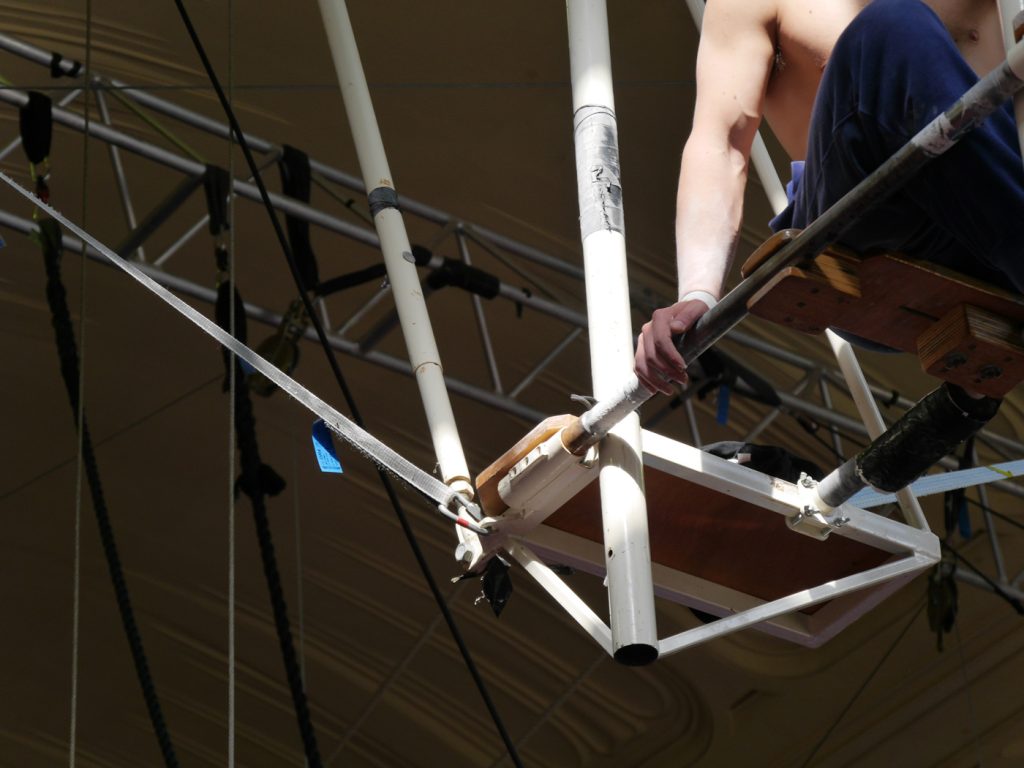
The acting classes aim to develop a student’s own unique and original stage persona.This persona evolves according to the kind of performance space (stage, circus ring etc.) and the spectators, who need to be able to switch from the role of audience members to partners. Actors must hone their ability to open up and listen to others to create a real relationship with them.
The improvisation and composition course explores dramatic terrains, by focusing on the language of gestures and how the body can express itself in different directions and spaces. This approach is designed to feed into the students’ ideas and builds the foundations of a common creative language.
These foundations include exploring space, rhythm, states, places, urgency and creating a dramatic situation.
Music
Circus artists often have to deal with music and sound in general. The aim of this course is to make students aware of the importance of the relationship their bodies have with music and sound, and how constructive they can be in the internal creative process and as a tool to enrich the quality of a performance.
Students learn about music in an active, practical way, exploring not only how music works (tempo, energy, structure, duration, variations etc.) but also how we react to it (interpretation, phases, improvisation etc.). These reactions can be expressed by instruments or bodies. In this course, students will examine their own relationship with music, their “musicality”.
Production
These classes provide support for personal projects and are aimed at second and third year students. They prepare students to play an active role as an artist in society and equip them with the theoretical tools they need to join the employment market.
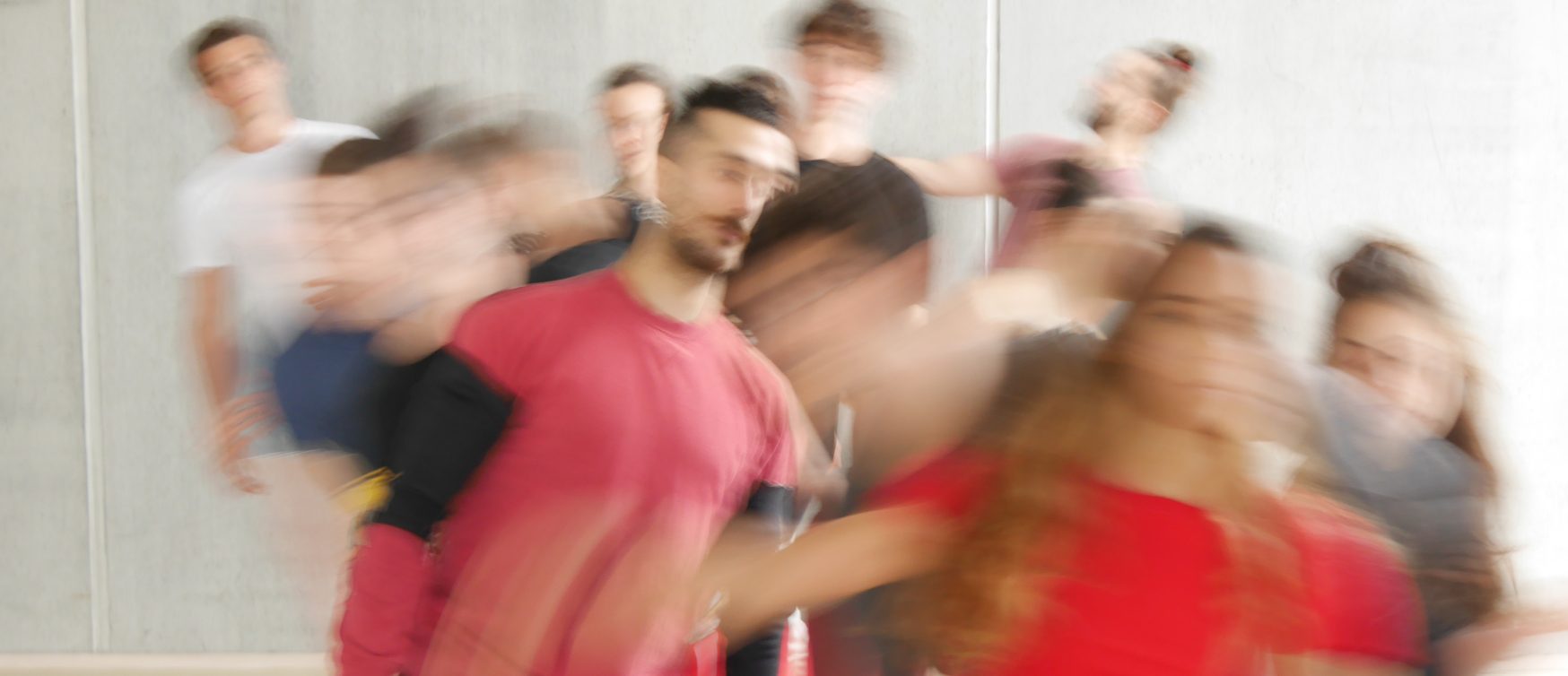
general classes
History of Art
In the first year, this course raises different questions about how art has been used since the dawn of humanity. Why do humans seek to represent and transform the world around them? Where does the word “art” come from, what does it encompass, what is its genealogy? What does the word “artist” mean?
In the second year, the course focuses on analysing important works of art in different periods. Theoretical courses are interspersed with visits to museums and contemporary art venues.
The 3rd year course looks at a number of iconic works of art, from Duchamp to the modern day, as well as critical texts dedicated to or covering contemporary art.
History of the Circus
This course is designed to help students find their place in the shifting landscape of the circus arts. It helps students reflect on their own artistic approach as part of a network of different artistic, social, political and economic components in time and space.
The goal is to help students understand what has changed and what has stayed the same throughout the history of the circus in relation to history as a whole, and Western history in particular.
We also look at the changes that are happening at the moment, looking at the history of our present times.
Circus engineering
This course is designed to teach future professional artists how to manage the technical equipment used in their art as safely as possible and in accordance with current regulations.
In addition to this, acquiring these skills and technical abilities should give future professional artists more freedom and capacity for innovation.
Some of this training is mandatory thanks to regulations for working at heights, whether in a harness or suspended, as well as for using lifting equipment and scaffolding towers.
Science and science applied to the Circus Arts
This course is organised around three main components: basic anatomy as it relates to the analytical, specific observation of movement, the physiology of joints and muscles, and basic sports, as well as general, nutrition. Students will study the body, focusing on the torso, shoulders, elbows, wrists and hands, hips, knees and finally ankles and feet. The focus then shifts to lifestyle: the food pyramid, sports nutrition and hydration.
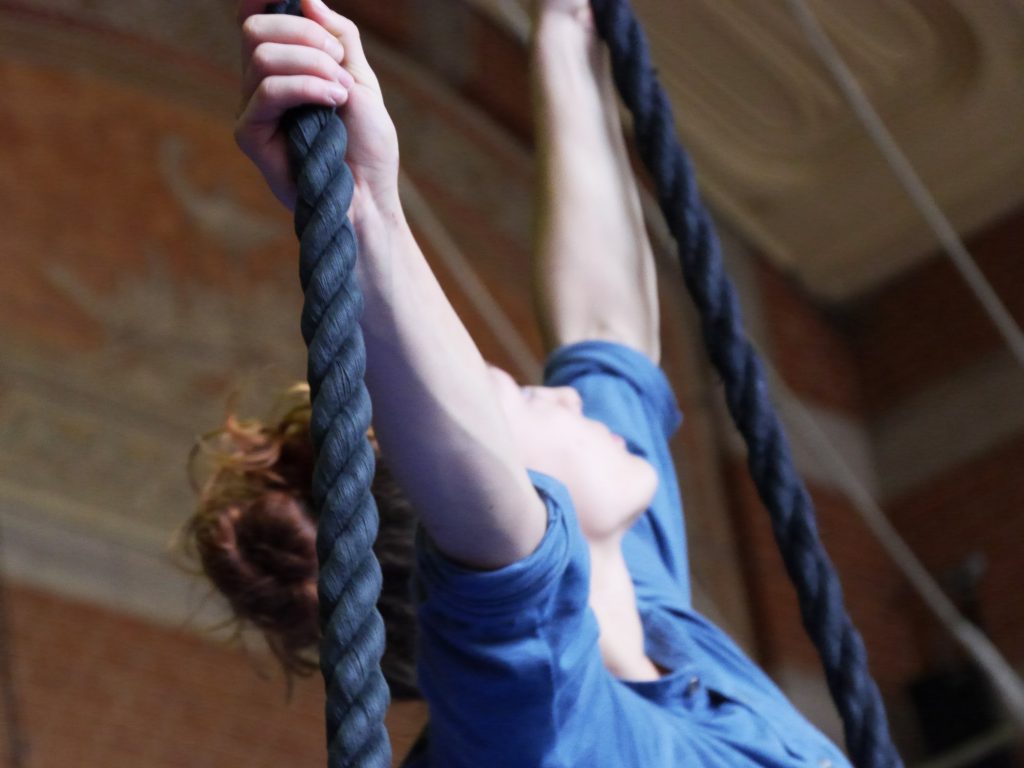
technical classes
Dynamic acrobatics
In the first year, the course focuses on mastering the basics and individual elements. Understanding and analysing movement, developing your capacity for trying out and exploring new things, identifying the similarities between one discipline and the next. Through repetitive, guided training, students evolve to become more autonomous.
In the second year the course moves towards building up sequences, incorporating basic elements into their artistic habits. Some of the work focuses on the particular levels of endurance required in acrobatics, so that techniques can be seamlessly incorporated into individual or group work. Students are encouraged to explore their sensations and feelings. They are required to become more personally involved in a new movement, building on movements that they have already mastered.
In the third year, it is all about autonomy. Each student develops a strategy based on his or her personal goals, according to his or her level and specialty. The course is based on consistency, range, aesthetics and difficulty on the one hand, and on exploring the different acrobatic forms that can be used in a circus environment on the other.
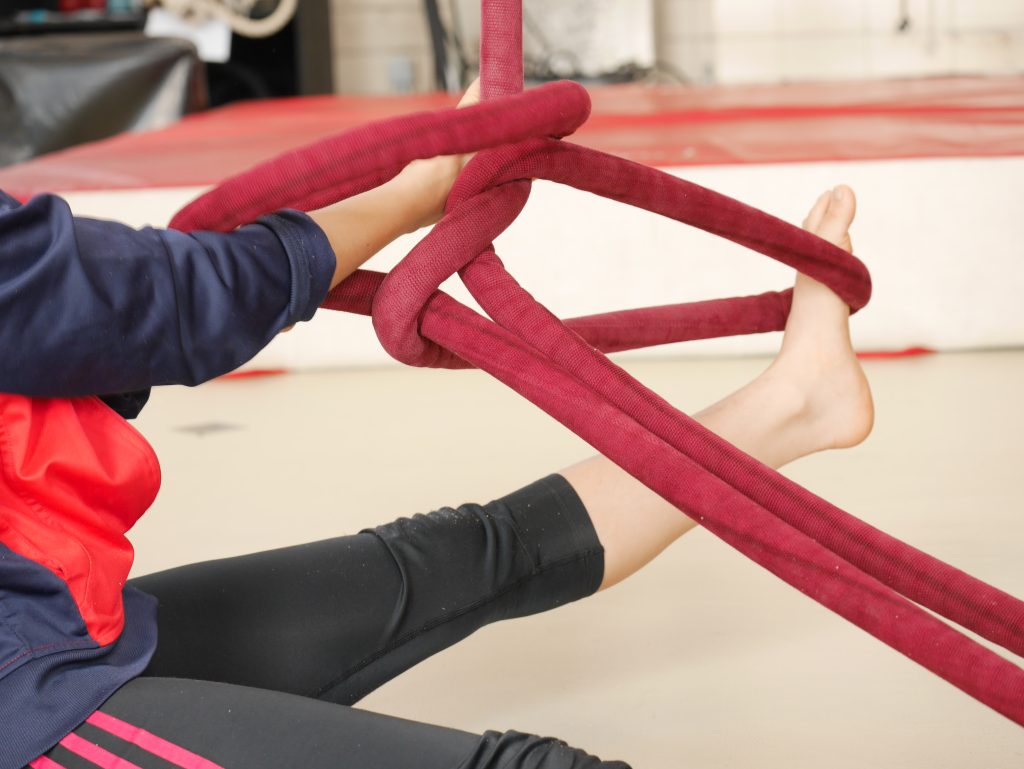
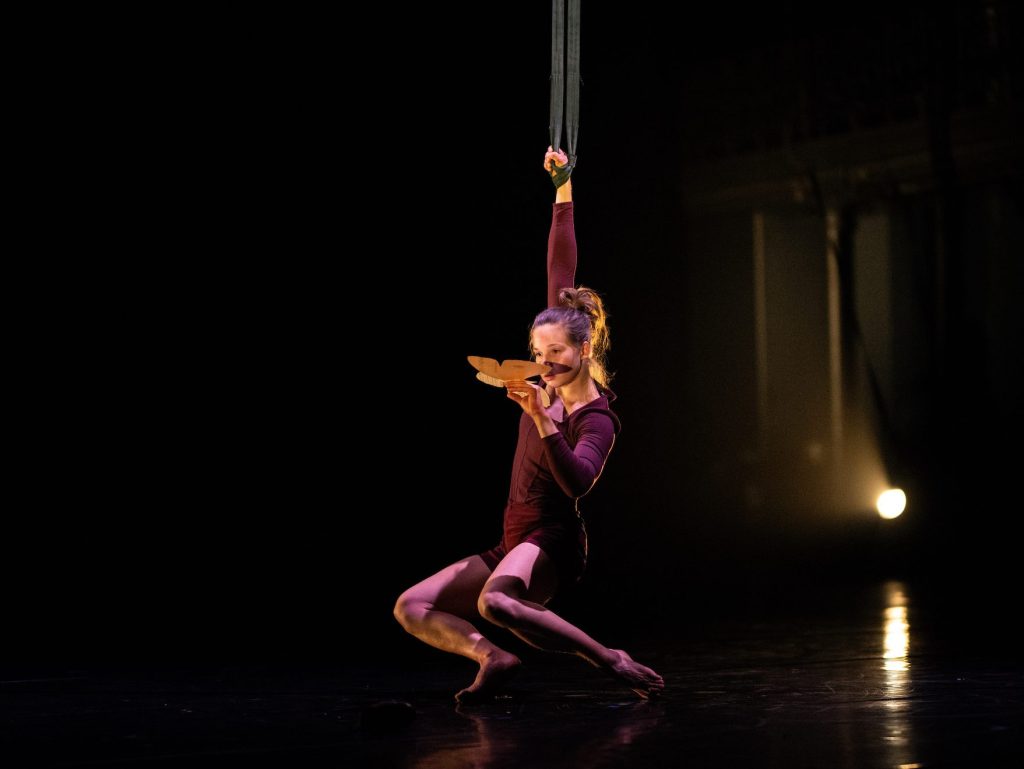
Static Acrobatics
This class is only taught in the first two years. Students master different balance positions with two or three points of support and more generally, hone their individual flexibility.
Trampoline
Being able to use the trampoline fits in with the spirit of the future artist’s versatility and is intrinsically linked with dynamic acrobatics. It offers students the chance to explore space in all of its dimensions, encouraging them to find out how their bodies feel in space.
Repetitive, guided work, geared towards the work being done alongside this in dynamic acrobatics classes.
Specific physical preparation
The class is above all designed to prevent injuries, helping to make sure that everyone can cope with the ramping up of physical training, both in terms of time and intensity. The main focus is on rebalancing the distribution of muscles, working the antagonistic muscles, rebalancing the posture, honing the flexibility of agonist and antagonist muscle pairs and strengthening highly stressed joints.
Once a student’s postural balance has been preserved, specific physical preparation is geared towards enhancing performance in terms of the requirements of their particular circus arts specialty. Plyometric, explosive and eccentric work are gradually incorporated.
3rd year students will be able to draw up an “inventory” for their own specific physical preparation to boost their technical performance, as well as designing their own personal programme.
evaluation and juries
Each course is assessed either by an exam, or by practical, theoretical, oral or written work, through continuous assessment and/or an internal or external panel of artistic examiners. Some courses may be assessed on the basis of a combination of these. At the beginning of each academic year, professors will explain how their courses will be assessed and put together their assessment panels.
They will define their marking criteria and how grades will be weighted so that students are fully aware of how they will be assessed. The procedure is explained in the student rulebook.

